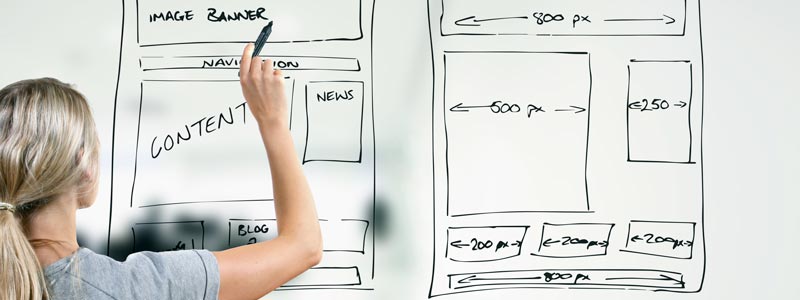
By Lisa Barone, from Search Engine Watch – Latest – http://bit.ly/1oUTWaz
Your website homepage! It’s often the first encounter visitors and potential customers have with your brand, yet, for some reason, it’s treated as the also-ran of your website. With so much attention devoted to interior, big-money pages like your Products, your Features, and your Resources, the average site homepage is either too cluttered to be effective or too barren for a customer to know what you actually do.
The result? A weakened conversion path and frustrated visitors.
Below are some best practices on what to include on your site’s homepage, and what to leave off.
Include: Who You Are & Why You’re Trustworthy
Your homepage is kind of like a first date. This is your chance to quickly get across who you are and show that other people on the Internet like doing business with you. Your homepage lays the foundation for your site, conveying messaging, core values, and showing people not only what you do, but how you do business. That doesn’t mean to throw your work process right there in your homepage slider (we’ll get to that in a moment), but the words and imagery you use should be deliberate to paint the picture of who you are. If your homepage is all a visitor sees, would they know what you’re about? If not, your homepage isn’t working.
Another important way to use your homepage is to build trust. Again, a stranger landing on your site for the first time is looking for cues that you’re reputable, trustworthy, and that you’ll be around for them in the morning. Trust signals may include sharing clients you’ve worked with, customer testimonials, places your brand or product has been featured, your money-back guarantee, your social media profiles, etc. Let new visitors see that you’ve been around awhile to make some friends.
Leave Off: The Carousel
OK, so this is a sensitive subject around today’s vendor/client table. The homepage carousel has become a bit of a fast-moving trend – with lots of website redesigns including them. And they’re useful. They allow you to show off three to four different products or services without taking up a huge amount of real estate. And each one can be accompanied by great imagery. What could be better?
Maybe nothing, and maybe your carousel is working. I know we’ve created some great ones for clients. But take another look at it. Ask yourself (or maybe someone without a vested interest in your website) whether your carousel works for you, or whether it’s annoying users and reducing visibility. Is your carousel converting or is banner blindness taking over instead? If you don’t know, check your analytics. The answer is already there.
Include: Your Benefits
Many sites are pretty good about loading their homepage with the many features of their product or service. They hit us over the head with the speed, the technical ability, and the shiny things that make up what they’re selling. But that’s not what people are after. People want to know the benefits of your product or service. They want the WIIFM and to know what’s at stake. Don’t list off the technical specifics of that new refrigerator, that’s not what matters. Instead, it’s about how those new lower shelves make it easier for the kids to feel independent getting their own snacks. It’s not the thread count of the new sheets that matters, it’s the lazy Sunday mornings you’ll have curled up reading your favorite book.
The story is in the benefits, not in the features.
Leave Off: Anything That Auto-Plays
Auto-play is intrusive and bothersome to visitors. Leave it off.
Include: Clear Calls to Action
The minute someone lands on your homepage, they are trying to get off your homepage. They came looking for a new baseball glove, and your site sells athletic equipment, so where do they go? What is their next step?Having a clear navigation structure will help them complete their task, but a successful homepage will also provide a necessary roadmap for the rest of the site interaction.
Know what you want your visitors to do when they land on your site, and then present them with how to be successful directly from your homepage. This includes using primary calls to action, as well as secondary ones, to get them into a conversion funnel and on their way.
Leave Off: The Kitchen Sink
The purpose of your homepage is to get people into the rest of your site doing the things you want them to do. You may want them to read your blog, to download a resource, or to watch the videos on your product pages. These should be the primary calls to action on your homepage.
Your homepage should give visitors what they need, and nothing else. Presenting too many options may paralyze customers or send them down the wrong site path. Put your most popular products on your homepage, not everyproduct. If they like what they see initially, they can look around. By limiting the calls to action and information, you make it easier for customers to understand what comes next.
Bonus Include: An Immediate Offer
Whether it’s an e-book I can download, a newsletter to subscribe to, or a community I can join, your homepage should provide an immediate way for me to begin a relationship with your brand. Give me something I can trade an email for to begin growing a powerful email list and keep your brand top of mind for that new visitor.
Is your homepage doing what it’s supposed to do? Is it answering the necessary questions and putting customers on the path to conversion? If you haven’t taken a look at it, now’s the time. And, quit it with the auto-play!
